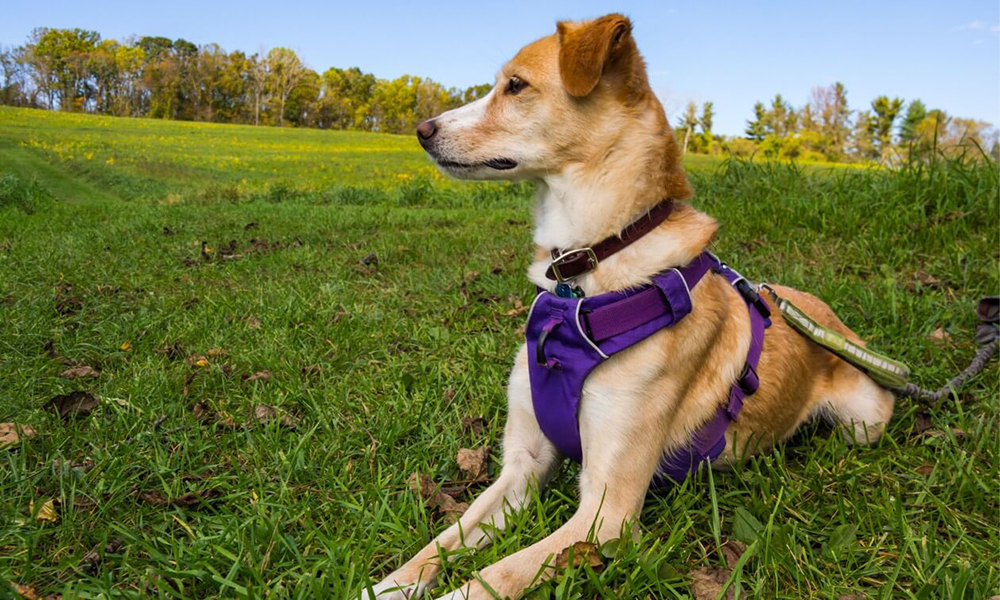By Heidi Clayton
The use of a harness to prevent pulling has become a hot topic in the dog world. The misconception among pet owners is that simply wearing a harness teaches them to not pull. Conversely, the resentment among some trainers is that they lead to deformities or that owners’ dogs are still out of control and reactive while walking. The only way to prevent pulling while on a walk is training. The use of a harness is a training aid to be used while teaching your dog to walk nicely, but not a cure for pulling.
To prevent deformities and skin irritation, a harness should be worn by a dog when you are actually walking them. This is particularly important for growing puppies as wearing any harness all of the time can lead to deformities in muscle and ligament development when the harness restricts free movement in these areas. On short-hair dogs, they can cause chafing and skin irritation. I also have met several dogs who somehow managed to eat the harnesses while wearing them. Whichever harness you choose, it should only be worn when walking.
When selecting a harness, your primary options are the front or back clip harness. My personal preference is the front clip harness which is placed over the dog’s head and clipped under the belly with the leash attached to the chest area.
I also use a martingale collar with this harness and attach the leash to both the collar and the harness. The controversy with this harness is that it restricts shoulder and chest movement, which it does. My argument for the front clip harness is that getting pulled off of your feet while training your dog to walk nicely teaches the dog nothing and only leads to frustration in both the dog and owner. Ideally, I train away from using a harness at all once I have established foundation leash manners. Then, I simply use a martingale collar on walks. For owners with dogs that are large and strong or are reactive, a front clip harness like the SENSE-ation or Easy Walk brands can be a game changer in the training process.
The other harness style clips on the back between the shoulder blades. I personally feel that these harnesses are rather useless when it comes to effectiveness. Think of the Iditarod Sled Race and the husky dogs wear this style of harness so that they can pull harder and faster with free shoulder and chest movement to win the race.
The back clip harness is no different than simply wearing a collar on a walk. You still have to train your dog to not pull while wearing one. I also find that nearly all of my training clients who use one do not have it fit properly. A major complaint is that their dogs are able to back out of them when having a meltdown on a walk. When using a back clip harness, you should always ensure that it fits snugly against the body. That said, make sure it’s not so tight that it will cause skin irritation.
Lastly, there is a harness that goes over the dog’s head and snout that I will never use in my training program. If there is one harness that will lead to problems in the wrong hands, it is the head halter. If not fitted properly, your dog will escape. Alternatively, the halter will jerk the dog’s neck around and lead to injuries.
Leash training can be hard. The use of the harness can make the puzzle come together a bit easier. If training your dog in a harness makes the process easier for you and your dog, I am all for it. Just make sure to educate yourself about their proper role in the process.
If you have any questions, please feel free to email me at heidi@fouronthefloordogtraining.net.
Heidi Clayton started Four On the Floor Dog Training to provide positive, reward-based dog training in South Jersey. She breeds, trains and shows bull terriers under the SoraBully’s Bull Terriers kennel name. Email questions to heidi@fouronthefloordogtraining.net or learn more at https://fouronthefloordogtraining.net










